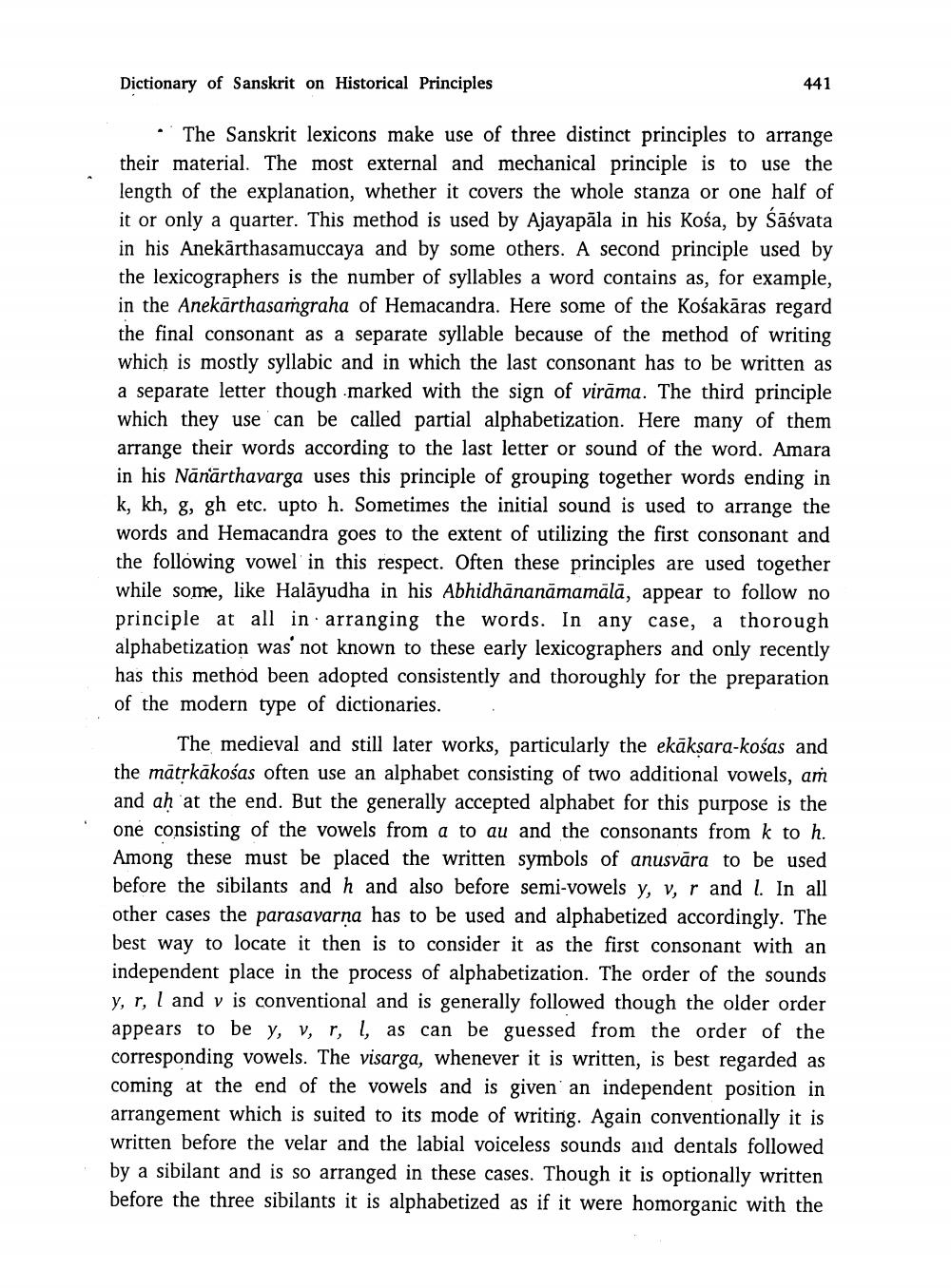________________
Dictionary of Sanskrit on Historical Principles
441
• The Sanskrit lexicons make use of three distinct principles to arrange their material. The most external and mechanical principle is to use the length of the explanation, whether it covers the whole stanza or one half of it or only a quarter. This method is used by Ajayapāla in his Kośa, by śāśvata in his Anekārthasamuccaya and by some others. A second principle used by the lexicographers is the number of syllables a word contains as, for example, in the Anekārthasaṁgraha of Hemacandra. Here some of the Kośakāras regard the final consonant as a separate syllable because of the method of writing which is mostly syllabic and in which the last consonant has to be written as a separate letter though.marked with the sign of virāma. The third principle which they use can be called partial alphabetization. Here many of them arrange their words according to the last letter or sound of the word. Amara in his Nānārthavarga uses this principle of grouping together words ending in k, kh, g, gh etc. upto h. Sometimes the initial sound is used to arrange the words and Hemacandra goes to the extent of utilizing the first consonant and the following vowel in this respect. Often these principles are used together while some, like Halāyudha in his Abhidhānanamamälā, appear to follow no principle at all in arranging the words. In any case, a thorough alphabetization was not known to these early lexicographers and only recently has this method been adopted consistently and thoroughly for the preparation of the modern type of dictionaries.
The medieval and still later works, particularly the ekāksara-kośas and the mätrkākośas often use an alphabet consisting of two additional vowels, am and ah at the end. But the generally accepted alphabet for this purpose is the one consisting of the vowels from a to au and the consonants from k to h. Among these must be placed the written symbols of anusvāra to be used before the sibilants and h and also before semi-vowels y, v, r and l. In all other cases the parasavarna has to be used and alphabetized accordingly. The best way to locate it then is to consider it as the first consonant with an independent place in the process of alphabetization. The order of the sounds y, r, I and v is conventional and is generally followed though the older order appears to be y, v, r, I, as can be guessed from the order of the corresponding vowels. The visarga, whenever it is written, is best regarded as coming at the end of the vowels and is given an independent position in arrangement which is suited to its mode of writing. Again conventionally it is written before the velar and the labial voiceless sounds and dentals followed by a sibilant and is so arranged in these cases. Though it is optionally written before the three sibilants it is alphabetized as if it were homorganic with the




